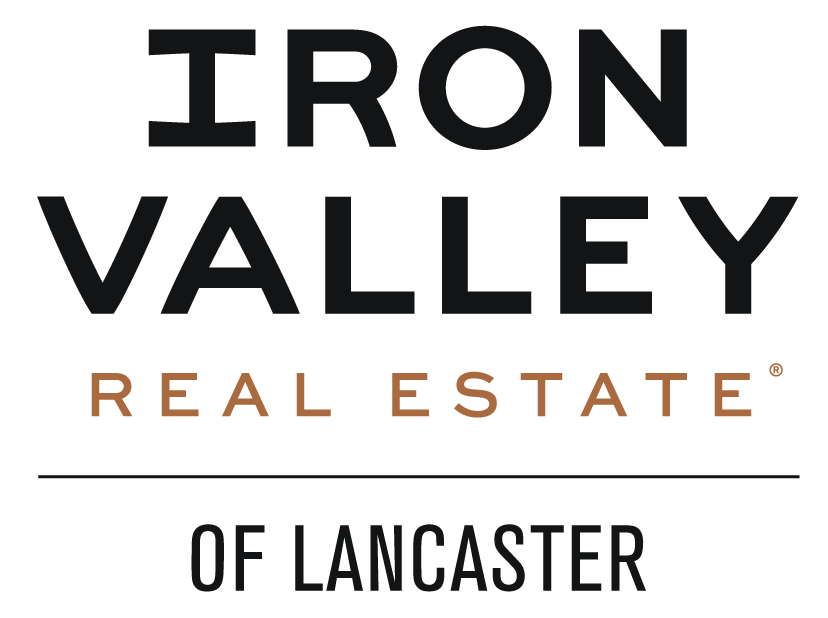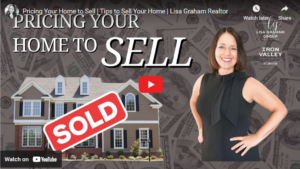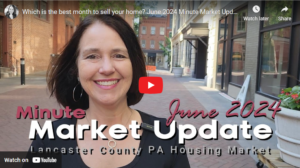What if you could buy a home before you sell your home? Time to move in, time for renovation, less pressure and out from under the time crunch! Plus, you would be able to write offers without them being contingent on selling your home, making your offers competitive in this market. Check out the interview I had with Dave Kuhn of Union Home Mortgage to find out a solution that might work for you. And watch the video: https://youtu.be/1Foe-DgzeEA
LG: So many of my clients have a home to sell in order to purchase a new home and, you know, in this market, it can be very challenging to find a home with those conditions. You’re writing an offer contingent on your home selling. And if there are multiple offers, why would a seller take your offer, take that risk, of waiting for your home to sell? And if you sell without that contingency, chances are your home will sell fast. Then you may have to buy a home that really isn’t your dream home, or you have to figure out some kind of rental. None of these situations are ideal, and it puts people who want to sell and upgrade to their dream home, on hold. They’re not sure what to do. But, Dave, you have a solution that could allow homeowners to purchase their new home first and sell their current home after they close. So let’s talk about how you can buy before you sell.
DK: Thanks, Lisa. I am glad to be here with you today. This is a great topic to help people in today’s real estate market. I could not agree with you more. All of the concerns that you mentioned are very real for those people that currently own a home but would like to purchase a new one. I hear this every day. So let’s talk about the solution. Many of you out there may have heard of interim financing, gap financing, swing loans, or bridge loans. Often these terms are used interchangeably as the goal of each type is the same. To help a current homeowner purchase a home before having to sell their current home. But these options typically come with high fees that make them less desirable. Instead, I utilize a HELOC Strategy for my clients. The HELOC Strategy has very low costs only if an appraisal is necessary and accomplishes the same thing to help people to unlock their equity in their current home to prepare for the purchase of a new home. The kicker is…to utilize this strategy, we need to pre-plan. Meaning the homeowner needs to plan before they list their current home for sale, and before they have a new home to purchase.
LG: Okay. So how does this HELOC Strategy work?
DK: It’s really not that complicated. I think that it may best be illustrated with an example. Let’s assume that a client owns a home with a market value of $300,000 and they owe $200,000 on their current mortgage financing. There is $100,000 of equity in that property that, at this time, is illiquid. Meaning, they cannot access that $100,000, or any part of it, unless they sell their current home. But that is exactly what we are trying to avoid. Having to sell the home before buying the next home. If we utilize the HELOC Strategy, we can get a new loan of 90% of the market value of the home, or $270,000 in our example. Once the HELOC is completed, we would pay off the existing $200,000 balance of their mortgage financing, leaving $70,000 available to use to purchase their next home.
LG: Okay. But that is only $70,000, not the total $100,000 of equity that the homeowner has in equity in the property. Why is there a difference?
DK: That’s a great question, Lisa. There are several reasons for the difference. First and foremost, is that we want to maintain a safety net for the client. One day down the road, after the homeowner has purchased a new home, they are going to sell their current home that we just used the HELOC Strategy on. Better than anyone, you know that the sale price of the home is what the market will demand at the time of the sale and that there could be the possibility that the home does not sell for $300,000. In today’s market, this may be very unlikely, but we want to make sure that there is a bit of a buffer there to absorb any market fluctuation. Also, there are always costs to sell a home such as listing fees and transfer taxes to name a couple. Using the HELOC Strategy at 90% of the current market value will help to ensure that the homeowner does not have to write a check to pay off the balance of the HELOC should the net proceeds come in short.
LG: Got it. So the homeowner in this example would have $70,000 to use for the purchase of their next home without having to sell their home first?
DK: Exactly. They would have $70,000 from the HELOC Strategy, plus any additional savings they planned to contribute to use for the purchase of the new home to cover their down payment, closing costs, and any other prepaid items. Once the HELOC Strategy has been put in place, the homeowner will know that they can purchase the new home without having to sell their current home.
LG: This sounds fairly easy. What are the potential negatives with this strategy?
DK: I couldn’t agree more that the downside must always be considered. First, I already mentioned that there is the possibility that the current home sells for less than the original market value that was used to establish the HELOC Strategy. While it is not likely in this market, it could happen. Second, the homeowner will need to qualify for the new loan under the debt-to-income guidelines for the financing on the new home with the payment incurred under the HELOC strategy. We don’t have a lot of time now to discuss this in full, but I would make sure that this is not an issue before even starting this process with a homeowner. Third, the homeowner will have a payment due on the HELOC Strategy until their current home has been sold. This is not as big an issue as the minimum payment due each month is an interest-only payment due on the balance of the HELOC.
LG: It sounds to me like the negatives of this strategy would be reviewed and mostly eliminated before anyone begins the process.
DK: Yes, and the benefits far outweigh the negatives. First, the homeowner can now buy a new home before they sell their current home. This means that they can buy the home that they want, not just a home that they need because they have sold their current home. Second, the homeowner can take their time to move. They don’t have to pack up their entire home that they have sold, buy the new home, then unload and unpack in the new home. They can move a little at a time over the upcoming days and weeks. And third, the homeowner would also have time to do any cosmetic updates in the new home that they purchased while it is still empty, a much easier process, as they would still have their current home to live in.
Lisa Graham: This takes sellers out of the pressure cooker and allows them the time they need to find their dream home!
If you have any questions about this solution, please contact me and I’ll be happy to help!








 By Launch Kits
By Launch Kits